Look, everyone loves a red-tailed hawk. But after a while, it can be hard for an avid birder to score a new raptor species.
Once you’ve seen enough drive-by buteos to last a lifetime, or parsed the finer details of identifying Cooper’s vs sharp-shinned hawks, what other raptors should be on your birdy bucket list?
These nine unusual raptors are found only in the south and southwestern US, from Arizona to Florida. You’ll have to work hard to see them: some are rare, others secretive and restricted to certain habitats, while others make for a challenging field ID.
But all nine birds are well worth seeing, if you’re lucky enough to get the chance.
-
Zone-tailed Hawk
Buteo albonotatus
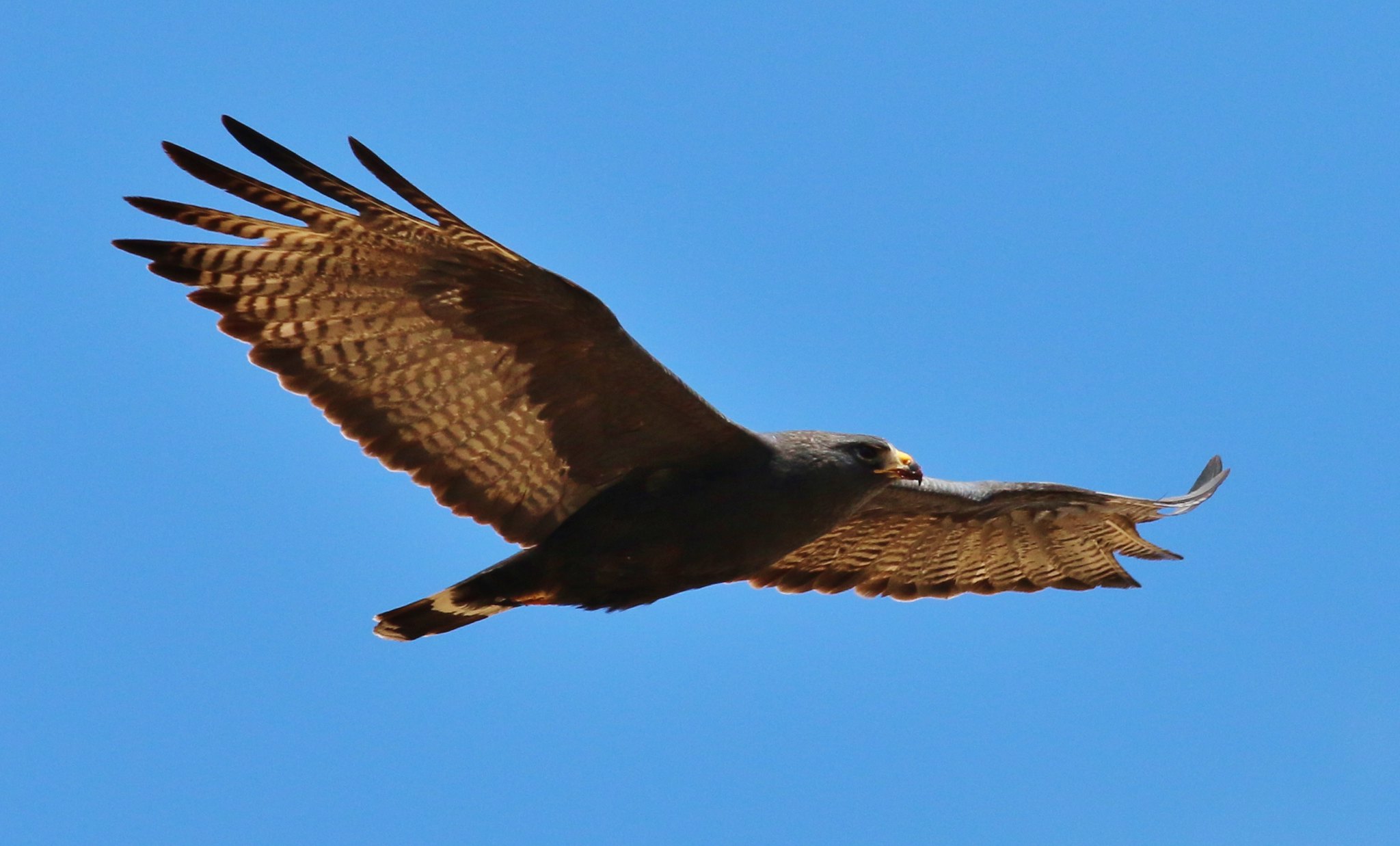
Zone-tailed hawk. © Tom Benson / Flickr Look out for this striking hawk when you’re in the desert southwest. Zone-tailed hawks breed south-central Arizona and New Mexico, as well as southwestern Texas. In winter they migrate further south into southern Mexico and Central America. They’re also found year-round in parts of South America.
While buteos can often be a bit challenging to ID from a distance — especially with all of those color morphs — the zone-tailed hawk is easier to pick out thanks to their jet-black plumage. From below, adults have light-grey flight feathers with a black chest, underbellies, and shoulders. From a distance, their color pattern resembles a turkey vulture, so it’s worth double-checking each and every bird if you’re in the right range during summer.
They hunt an array of small animals, typically by soaring low over open terrain with their wings in a V-shape (again, think turkey vulture).
-
Gray Hawk
Buteo plagiatus
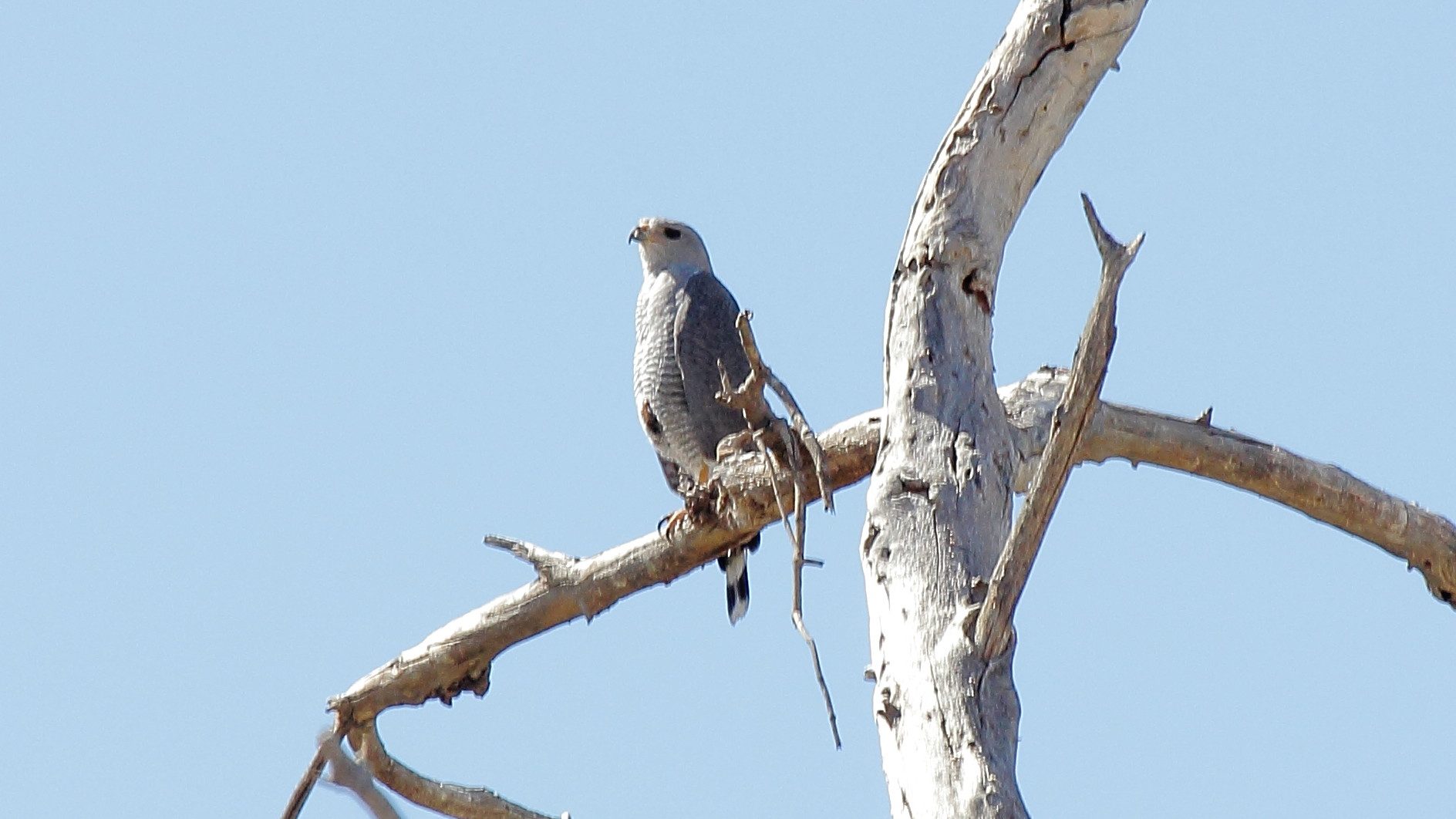
Gray hawk. © Dominic Sherony / Flickr Gray hawks are primarily a Central American bird, although in summer their range just tips across the US border in southeastern Arizona, far southern Texas, and southwest Texas.
Though classed as a buteo, gray hawks were once called Mexican goshawks because they look and behave like accipiters. They have light gray plumage with heavy, fine barring across their chest, belly, and wings, and a long, black-and-white banded tail. They also have bright yellow legs and a yellow and grey beak.
Lizards make up the bulk of their diet. They hunt by perching in cottonwood or willow trees and watching for scurrying reptiles below. If you’re looking for gray hawks in the field, search cottonwood and willow stands alongside rivers, especially rivers with adjacent mesquite woodlands.
-
Hook-billed Kite
Chondrohierax uncinatus
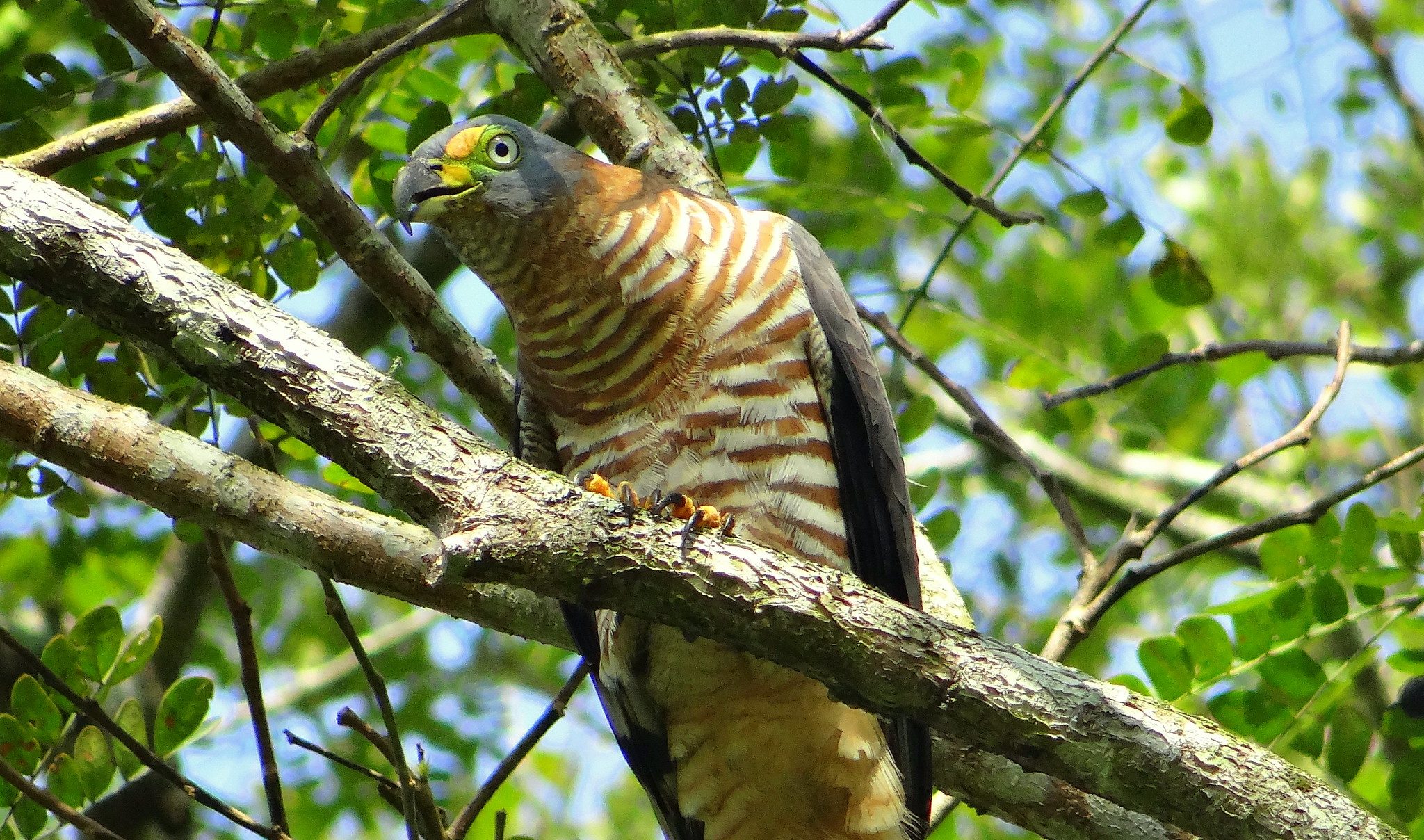
Hook-billed kite. © barloventomagico / Flickr The hook-billed kite is one heck of a bird. It looks like a hawk with the plumage of a cuckoo and the bill of a parrot.
Males have dark gray plumage above, barred white-and-gray feathers on their chest and belly, and a tail with broad bands of black and white. Females are similarly patterned, except with brown and cheastnut hues. The bird’s most striking feature is its large, hooked bill, coupled with bright yellow and blue-green lores (the skin between a bird’s bill and eye).
The size of a hook-billed kite’s bill can vary quite a bit between individuals, and these differences aren’t related to age or sex. According to the Cornell Lab, scientists think that the two sizes help reduce competition between birds, with birds targeting snail species that fit their bills.
Hook-billed kites have only recently expanded their range into the United States. The species was first seen in the far southern tip of Texas in 1964 and has been a regular resident since the mid 1970s. The US population is small, making the hook-billed kite a challenging bird to find.
Hook-billed kites are much more numerous in Mexico, Central and South America, though their populations are declining due to habitat loss and the introduction of non-native snails. Many non-native snails are too large for the birds to eat, and larger snails also prey on smaller snail species, reducing prey populations for the kites.
Look for them along the Rio Grande, where they hunt along wooded streams, moving branch to branch in the forest canopy, searching for tree snails.
-
Short-tailed Hawk
Buteo brachyurus
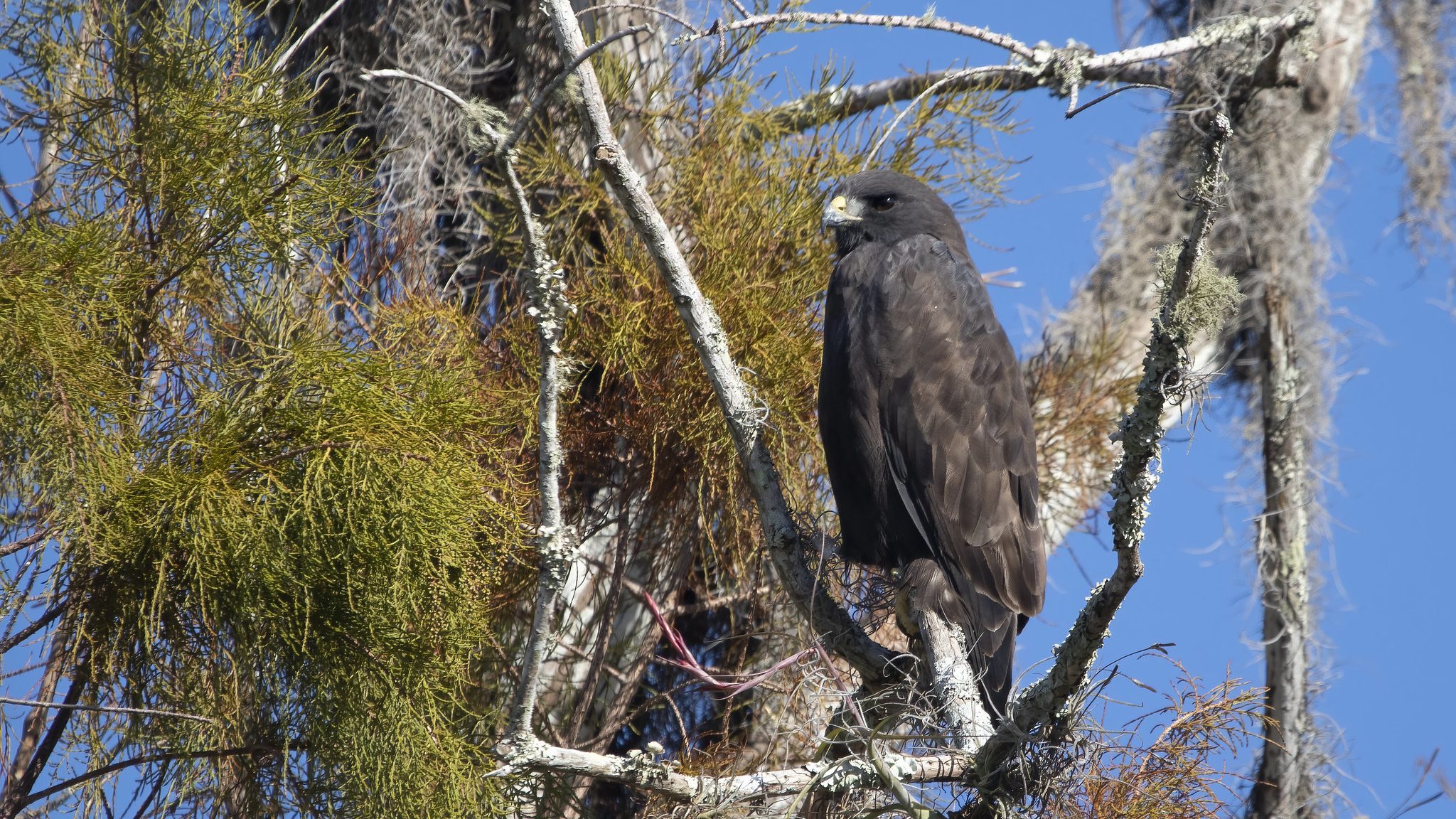
Short-tailed hawk. © Dennis Church / Flickr If you want to see a short-tailed hawk in the United States, you’ll have to head to Florida. This species is found year-round in the southern tip of the state, slightly expanding their range northward to Central Florida in summer.
They’re on the smaller side for a hawk, and have two plumage morphs. The dark morphs — which are more common in the US — have deep black plumage, with a banded tail and barred flight feathers. Light morphs are dark brown above, white below, and have a distinctive white throat patch.
Short-tailed hawks hunt along forest edges, hovering above prey before they dive. Birds form most of their diet, but they’ll also eat small mammals, reptiles, and amphibians. They breed in large, undisturbed tracts of forest, but outside of the breeding season they can be found in a range of habitat types, including mangroves, savannahs, marshes, pastures, and in human settlements.
The Florida population of short-tailed hawks is quite small — around 500 birds — and is threatened by habitat loss from both human development and sea-level rise.
-
White-tailed Hawk
Geranoaetus albicaudatus

White-tailed hawk. © Andy Morffew / Wikimedia Commons In the US, white-tailed hawks are somewhat common on the southern Texas coast, where they hunt in prairies and other native grassland habitats. They also range farther south into parts of Central and South America.
They have slate-gray wings with russet shoulders, a buffy white underbelly, and a striking white tail with a thick black band. Like other hawk species, white-tailed hawks can exhibit light and dark morph plumage, as well as different coloration for juveniles. Swainson’s Hawks look similar, but their wings are distinctly two-toned and their tail is banded gray and black.
White-tailed hawks usually hunt on the wing, scanning the ground below for small mammals, birds, and reptiles. They’re often attracted to brush fires, where they hunt small animals fleeing from the flames.
-
Snail Kite
Rostrhamus sociabilis
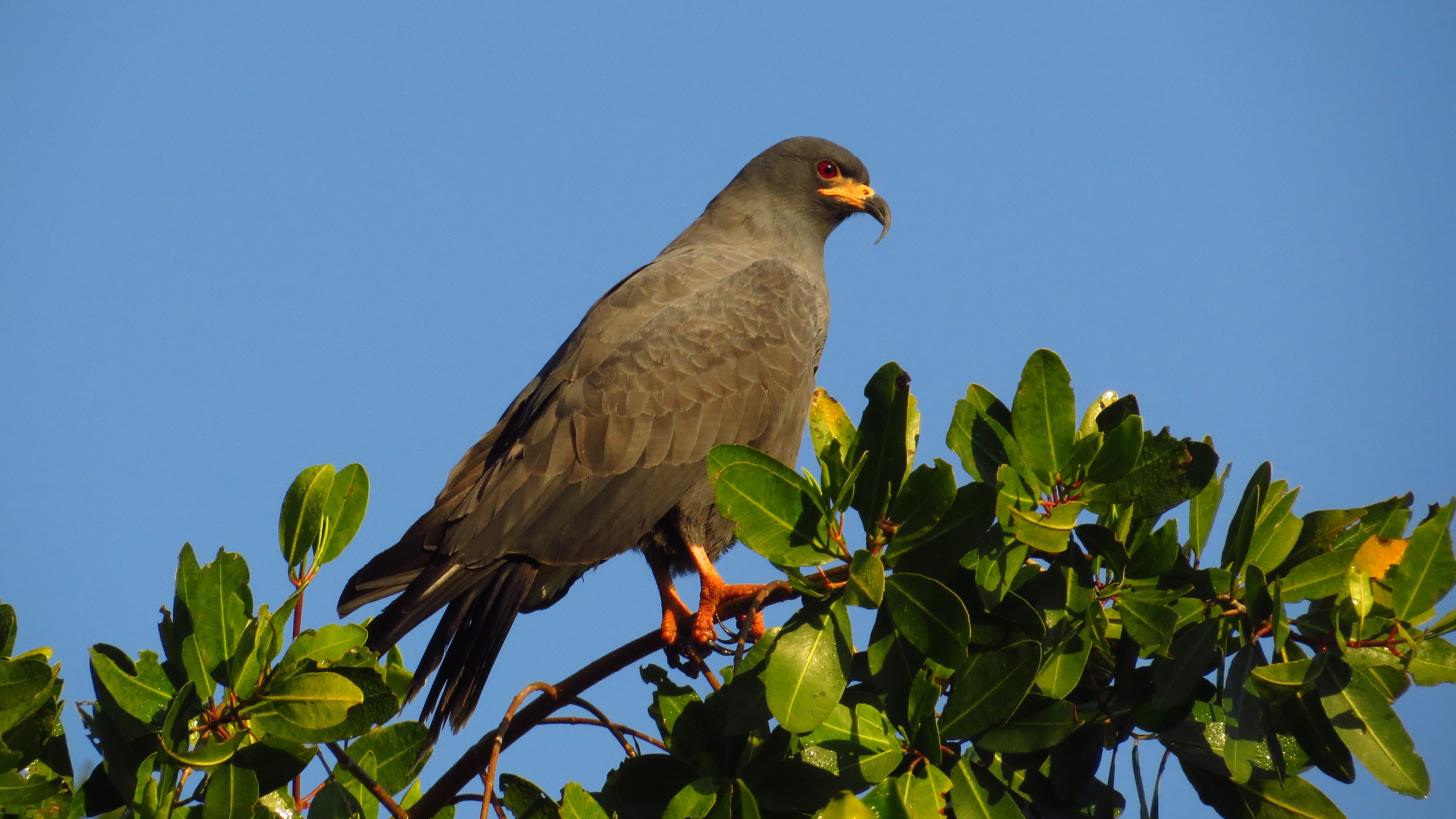
A snail kite. © Bryant Olsen / Flickr Snail kites are another species that loves to slurp down snails. Both male and female snail kites have slate-gray plumage, white under-tail covers and white terminal tail band, orange feet and bills, and red eyes. Their hooked bill is adapted to the bird’s primary food source: freshwater apple snails.
Snail kites hunt by hovering low over wetlands. Once they spot a snail, they grasp it in their talons and fly to the nearest perch. There, they use their sharp, curved bill to reach into the shell and pluck out the snail. Their diet includes both the native Florida apple snail and two other non-native species accidentally introduced to Florida: the island apple snail and spike-topped apple snail.
Look for snail kites year-round in southern Florida, where they hunt in freshwater wetlands, drainage ditches and retention ponds, canals, and sloughs. They’re also found in Cuba, the Yucatan peninsula and much of South America.
Unusual for a raptor, snail kites like to nest in groups and will also roost alongside other birds, including vultures, egrets, anhingas, and ibis.
The species is listed as federally endangered in the US, where populations fluctuate significantly with water levels and prey availability. Snail kites were nearly extirpated from Florida entirely with the draining of the Everglades, and habitat loss remains their most significant threat.
-
White-tailed Kite
Elanus laucurus
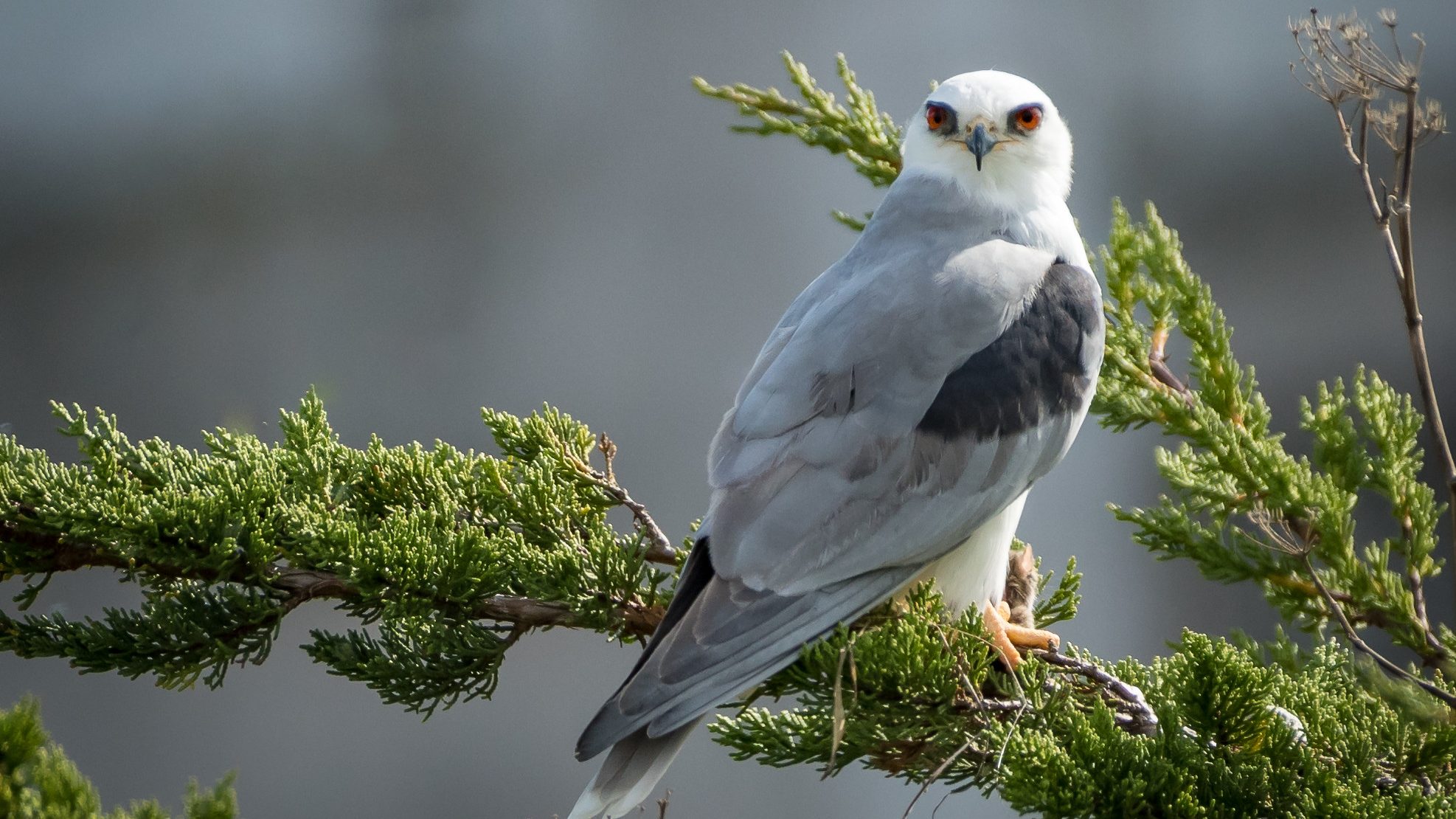
White-tailed kite. © Becky Matsubara / Flickr White-tailed kites are found in western Oregon and California, South Florida, southern Texas, and throughout Mexico, and Central and South America. They live in grasslands and savannah habitats, including cultivated fields.
White-tailed kites are east to distinguish from other raptors. They have a striking all-white body and tail, with white fading to gray on the wings, and tiny back wrist-spots. If you see one up close, you’ll notice its yellow feet and a deep red eye. From above or when perched, look for deep black coloration on the bird’s shoulders.
White-tailed kites are fairly easy to spot, thanks to their hunting behavior, known aptly as “kiting.” These birds fly into the sky, face the wind, and hover in mid-air like a kite. From here they scan for prey, dropping down on top of the unsuspecting small mammal, lizart, or insect.
-
Swallow-tailed Kite
Elanoides forficatus
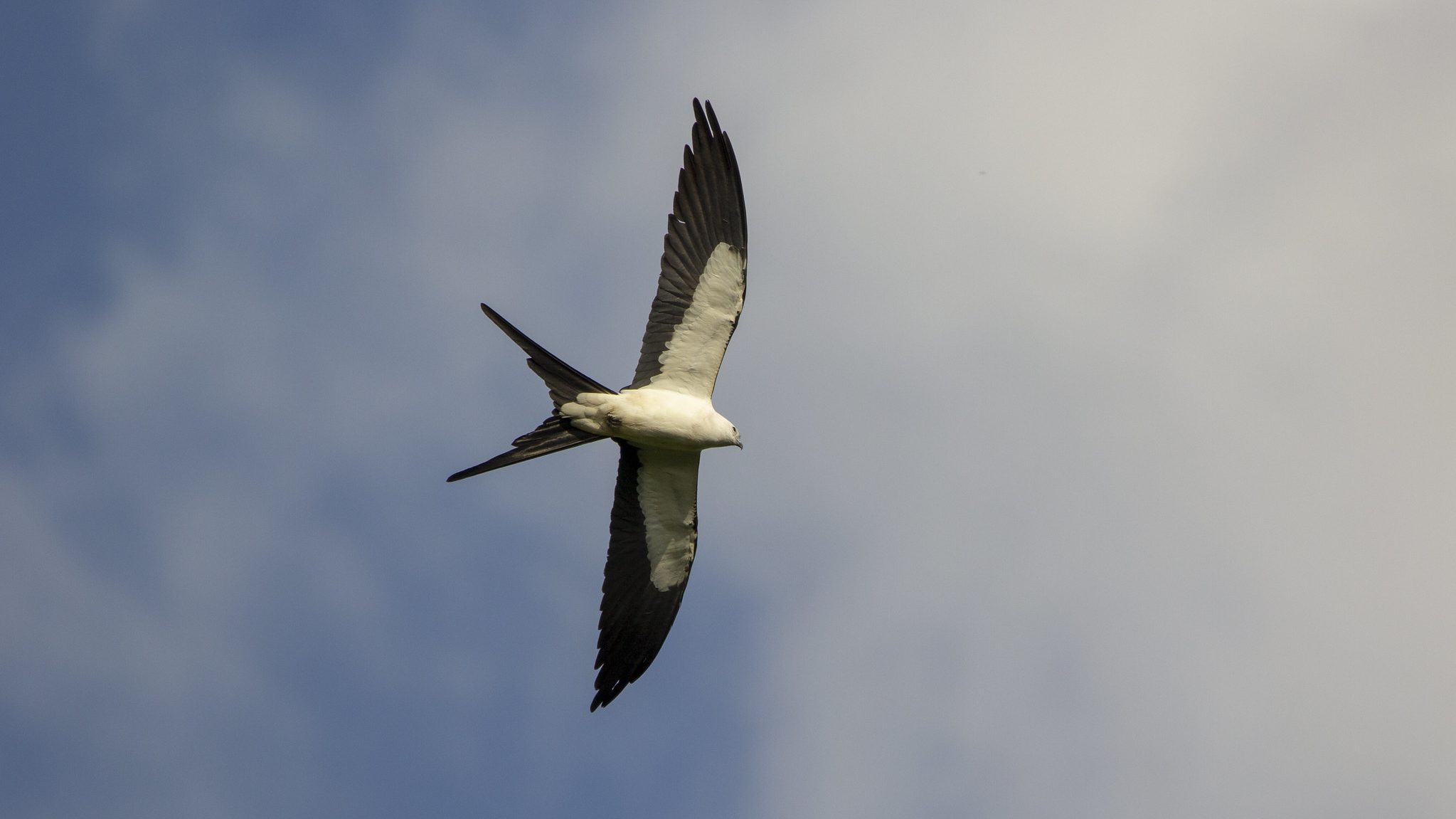
A swallow-tailed kite. © Dennis Church / Flickr Swallow-tailed kites are unmistakable and unforgettable birds.
They have a swallow-like silhouette, with delicate, tapered wings and a long, forked tail. They have a white body and inner wings, which contrasts with their jet-black flight feathers and tail. They have a small head and delicate bill.
Swallow-tailed kites rarely flap their wings, instead floating along on thermals and using their tail to change direction. They hunt dragonflies and other insects on the wing, or glide down to the canopy to pluck frogs, lizards, snakes, and nesting birds from the upper branches.
They can be found in summer across all of Florida, coastal Georgia and South Carolina, and west across the Gulf Coast up to Louisiana. In winter, the species migrates to South America.
Swallow-tailed kites used to occur along the Mississippi River as far north as Minnesota, but their range shrank considerably in the last 100 years. In good news, populations have been increasing since the 1960s. Like other species in Florida, their primary threat is habitat loss.
-
Common Black Hawk
Buteogallus anthracinus
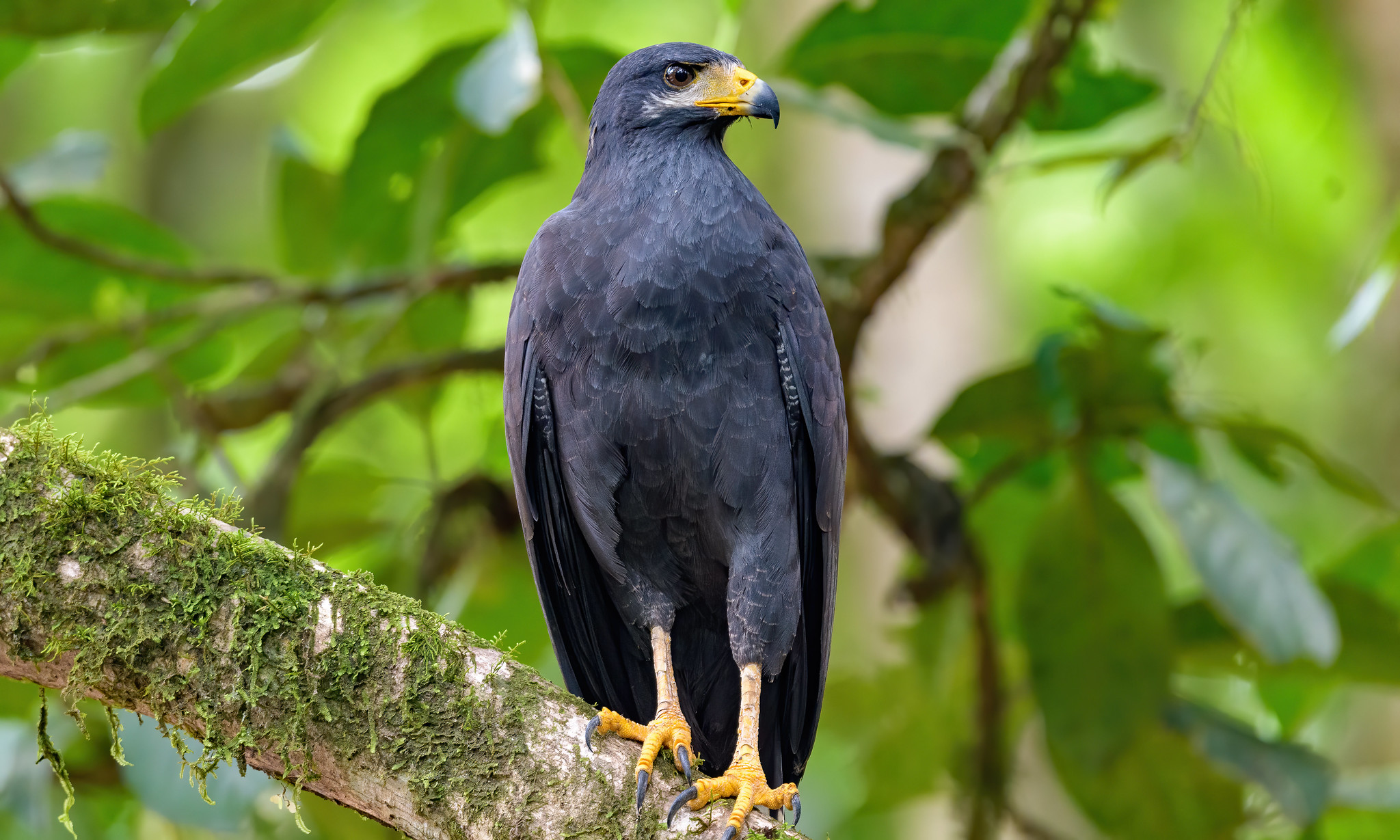
A common black hawk. © Becky Matsubara / Flickr Common black hawks aren’t very common, but they are black. This raptor has sooty black plumage from above and below, with a thin white stripe through the middle of the tail. They have very broad wings and a short tail, coupled with a yellow bill and legs.
Common black hawks summer in southern Arizona, where they frequent wooded habitats along rivers and desert streams. They’re rare in the US but common elsewhere in Central America.
These hawks specialize in aquatic prey. They hunt by perching on a rock or tree overhanging the water, watching and then jumping down from above. They will also wade into the shallows and use their wings to startle prey, like insects, crayfish, frogs, or fish.
In the US, common black hawks are threatened by the loss of riparian habitats and by invasive plants, like tamarisk, that invade long rivers and choke out native vegetation.
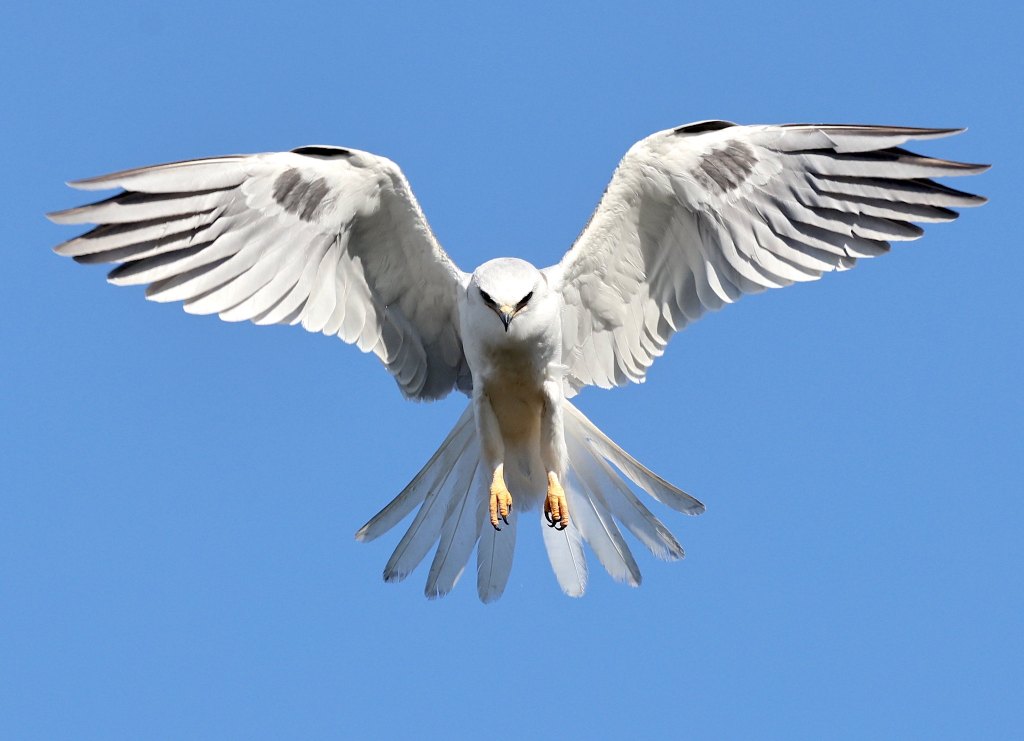



Join the Discussion